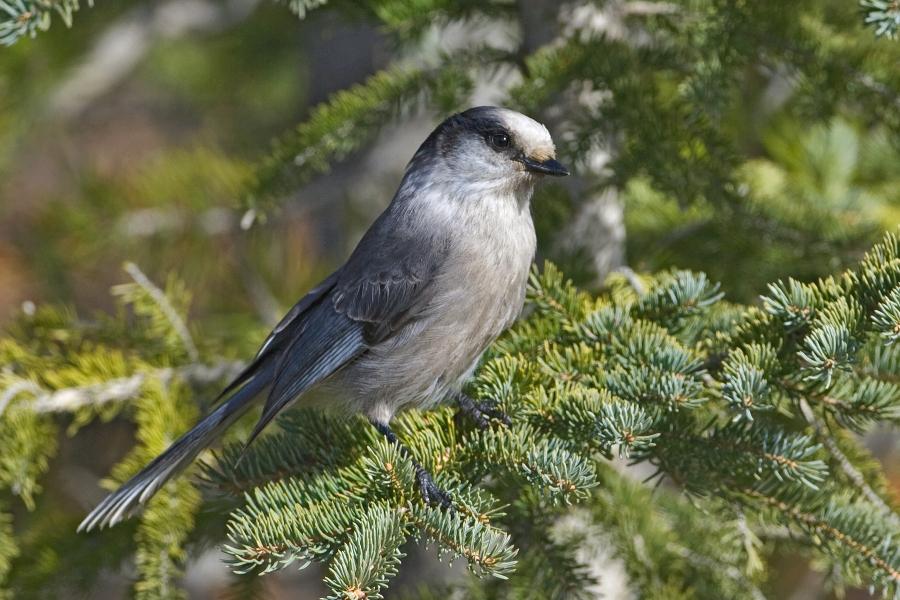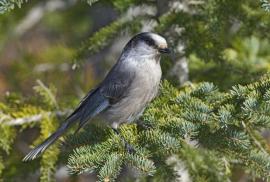Guide to Boreal Birds
Overview
Anyone who has camped in the mountains or the northern forests is familiar with this bird, formerly called "Canada Jay" and popularly known as the "Whiskey Jack" or "Camp Robber." This bird is very tame and is attracted to campsites, where it appropriates as much food as possible. It stores scraps of frozen meat, suet, or hide, gluing them into balls with its saliva and hiding them among pine needles.
The Gray Jay is a widespread resident of North America’s boreal and sub-alpine coniferous forests and is found in a variety of mature coniferous and mixed coniferous-deciduous forest habitats, especially where spruce is present. Habitats may include mixed aspen, white birch, balsam fir and white spruce. Essentially non-migratory, its occupation of permanent all-purpose territories in such climatically hostile biomes is made possible by its unusual ability to cache food items by gluing them to trees using special salivary glands. Breeding pairs have a loose tendency to be found in core areas covering less than half their territory. Gray Jays nest during late winter in cold, snowy, and apparently foodless conditions, with eggs incubated at temperatures as low as -30° C. The species preference for mature forests indicates that broad-scale, clearcut logging could limit its distribution. Forestry practices that mimic fires by making small clearcuts and leaving patches of optimal habitat interspersed may be able to maintain healthy populations.
Description
10-13" (25-33 cm). Gray above, whitish below. Forehead and throat white; nape and stripe through eye dull black. Immatures sooty-gray.
Voice
Whee-ah, chuck-chuck; also scolds, screams, and whistles.
Nesting
3-5 gray-green eggs, spotted with dark olive-brown, in a solid bowl of twigs and bark strips lined with feathers and fur and placed near the trunk of a dense conifer.
Habitat
Coniferous forests.
Range/Migration
Resident from Alaska east across Canada to Labrador and south to northern California, New Mexico, northern New York, and northern New England.



